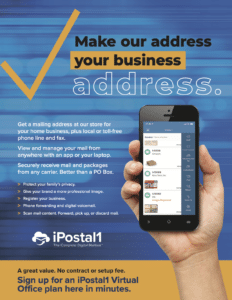Summary
What is a hybrid work model?
By definition, the flexible hybrid work model is a flexible work system that supports a blend of in-office, remote, and on-the-go workers. It offers employees the autonomy to choose to work wherever and however they are most productive.
Hybrid Work Model – Is it for You?
Are workers still finding value in in-person meetings?
A personal story from the guy writing this article. There was a time when I had a small software company. Our team 4 or 5 worked remotely. We were thriving, without the mind-numbing drive into the city. It was a dream realized. Or so I thought.
There were days when I didn’t leave the home office. On these days, I didn’t have any business-related travel, wasn’t going to the gym that day, and had no child-sports activities. It was mid-July in Arizona, so a mile-long walk thru the neighborhood wasn’t going to be much fun in 110-degree heat.
The sun came up, the sun went down. I didn’t leave the house. This really only happened once or twice, but I’ll never forget the feeling. It’s a strange place. Strange because I needed to see other human beings. So I took it upon myself to check my US mail at the UPS Store (that’s where our business mailing address was at the time). Sometimes I didn’t even have any mail. But the ritual of seeing and communicating with the employees at the UPS Store was good for me. 15 seconds of small-talk was enough to make me feel like a member of society again.
Those days when I didn’t leave the house, I felt like some weird self-imposed exile. Solitary confinement, by my own doing.
With COVID, many workers found that working from home isn’t good for the soul. Another thing that isn’t good for the soul is sitting in traffic commuting for 90 minutes each day. I’ll leave the weekly/monthly/yearly math up to you.
So where is the middle ground? A hybrid work model works for many.
What is a hybrid work model? What does hybrid workplace mean?
By definition, the flexible hybrid work model is a flexible work system that supports a blend of in-office, remote, and on-the-go workers. It offers employees the autonomy to choose to work wherever and however they are most productive.
HR Party of One Explains
Why a Hybrid Work Model Works
-
-
- You can avoid soul-crushing traffic.
- You see other humans. Even if they aren’t your colleagues, they’re other people. And many find value in that.
- You still work from home at times. This way you don’t miss that important Amazon delivery. You can be home while the painters start painting the interior of your home, and when they ask “Do you want the door frames to be white or cream color?” you can answer without them needing to hunt you down, and losing an hour of work.
- You still work outside of the home at times. The summer break from school for the kids might be killing your productivity, so you pledge to work from your neighborhood coworking space 2 or 3 days each week. The coffee, the buzz of an active office, and the particular vibe of the coworking space can energize you to get more done.
- The trade-off of productivity boost vs expense. You might even be so much more productive working a few days outside of your home office, that it more than pays for the expense of using the coworking space. And, if you’re working for yourself, coworking space fees are often tax-deductible. Check with your accountant for details.
- When you meet in-person with others, you can expect to be about 15% more effective at whatever task you’re tackling. (See Study Conclusions below).
-
A study by Stanford and Columbia
The Stanford Graduate School of Business and Columbia Business School dig even deeper. A study published in June 2022, co-authored by Jonathan Levav of Stanford Graduate School of Business and Melanie Brucks of Columbia University Business School, found that in-person teams generated more ideas than remote teams working on the same problem.
Here is what they concluded, and how a hybrid work model works in a modern workforce.
“In a laboratory experiment conducted at Stanford, half the teams worked together in person and half did so online. The in-person teams generated 15% to 20% more ideas than their virtual counterparts. In a separate experiment involving almost 1,500 engineers at a multinational corporation, in-person teams came up with more ideas, and those ideas received higher ratings for originality.”
Another interesting conclusion to the study is that virtual meetings didn’t seem to hinder how well the participants got along. Using semantic analysis of how participants spoke to each other, they found that the virtual and in-person teams showed the same amount of mutual trust and social connection. In a time when people often get combative in a virtual environment. We’ve all seen toxic Twitter and Facebook posts. People tend to be civil when conversations are face to face.
How does Google handle a Hybrid Work Model?
Find out more
Just know that if you’re stuck at home, or stuck in an office somewhere in the city, you have options. A new hybrid work model might be just what the doctor ordered.
Stop in to see what goes on over here at The Works – Gilbert. Book a tour, or just stop in between 8:30 am and 4:30 pm (M-F).





